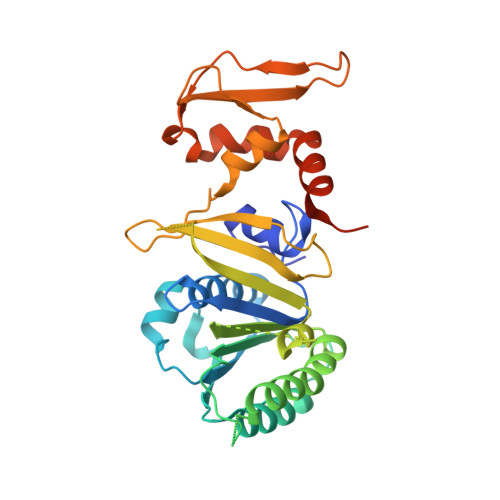Crystal Structure of the Phage T4 Recombinase UvsX and Its Functional Interaction with the T4 SF2 Helicase UvsW.
Gajewski, S., Webb, M.R., Galkin, V., Egelman, E.H., Kreuzer, K.N., White, S.W.(2011) J Mol Biol 405: 65-76
- PubMed: 21035462
- DOI: https://doi.org/10.1016/j.jmb.2010.10.004
- Primary Citation of Related Structures:
3IO5 - PubMed Abstract:
Bacteriophage T4 provides an important model system for studying the mechanism of homologous recombination. We have determined the crystal structure of the T4 UvsX recombinase, and the overall architecture and fold closely resemble those of RecA, including a highly conserved ATP binding site. Based on this new structure, we reanalyzed electron microscopy reconstructions of UvsX-DNA filaments and docked the UvsX crystal structure into two different filament forms: a compressed filament generated in the presence of ADP and an elongated filament generated in the presence of ATP and aluminum fluoride. In these reconstructions, the ATP binding site sits at the protomer interface, as in the RecA filament crystal structure. However, the environment of the ATP binding site is altered in the two filament reconstructions, suggesting that nucleotide cannot be as easily accommodated at the protomer interface of the compressed filament. Finally, we show that the phage helicase UvsW completes the UvsX-promoted strand-exchange reaction, allowing the generation of a simple nicked circular product rather than complex networks of partially exchanged substrates.
Organizational Affiliation:
Department of Structural Biology, St. Jude Children's Research Hospital, Memphis, TN 38105, USA.















